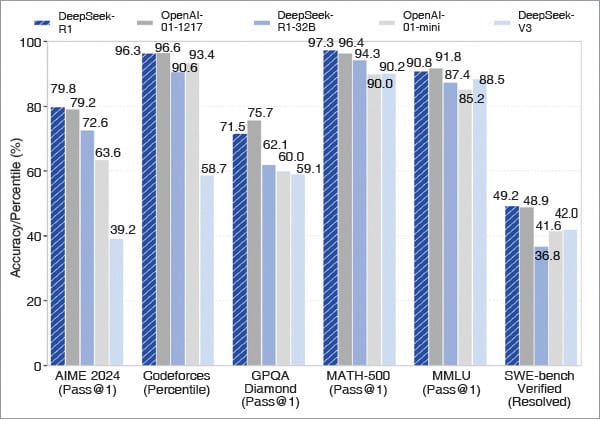We come across innovations every day, but disruptions are hard to come by. Is this one?

Everybody started talking about DeepSeek one fine day—from investors and tech champions to company heads and political leaders! They either love its potential to shake up the artificial intelligence (AI) industry or hate what it is doing to their earlier investments. What is your take on it—love or hate? We lay out the facts so you can decide for yourself.
Necessity is the Mother of Invention
People once thought only students from premier educational institutions could crack the Joint Engineering Entrance (JEE) examination. Then came the so-called ‘Kota Factory’. Has it ever occurred to you that the standout factor of the Kota model is perhaps not the intensive study materials or relentless testing but that many professors break the language barrier and teach science and mathematics in Hinglish, taking it to a broader number of aspirants?
Well, DeepSeek’s success can be understood along these lines. It was the outcome of a techie cum investor trying to tide over the embargoes that the US government kept imposing on the export of high-end chips to some countries, especially China.
In a small office in Hangzhou, China, tech enthusiast Liang Wenfeng harnessed AI models to analyse stock patterns, building a $13 billion portfolio for High-Flyer Capital, the quantitative hedge fund he founded in 2016. His deep obsession with AI drove him to acquire around 10,000 Nvidia GPUs—more than most Chinese tech firms had at the time. Wenfeng later stated in a media interview that his massive Nvidia stockpile stemmed purely from curiosity, not business strategy.
Then, in 2022, the Biden administration imposed sanctions restricting GPU exports to China and Russia, citing national security concerns. The ban initially targeted Nvidia’s H100, a powerful tensor core GPU for AI training and data analysis, before extending a year later to modified versions like the H800. This escalation made it increasingly difficult for China to compete in the AI race. Wenfeng revealed that High-Flyer Capital never struggled with funding—its real challenge was the embargo on high-end chips.
In 2023, High-Flyer Capital announced the creation of an independent research group dedicated to exploring the essence of artificial general intelligence (AGI) and advancing AI for humanity’s benefit. DeepSeek was born—with a mission to democratise AI.

Breaking the Cost Barriers
Some lament obstacles; others turn them into momentum. DeepSeek chose the latter. No big chips? No problem. Instead, they forged ahead, developing an AI model that performs impressively well with dramatically fewer resources.
In December 2024, DeepSeek released the affordable but efficient 671-billion-parameter AI model DeepSeek-V3. Within a few weeks came DeepSeek-R1, an AI model with chain-of-thought reasoning capabilities, trained using large-scale reinforcement learning with supervised fine-tuning. Chain-of-thought reasoning means that R1 can share the thought process or step-by-step reasoning by which it arrives at an answer.
For example, you can see how it solves a math problem step-by-step. It stops and evaluates each step, sometimes even going back to correct mistakes. What is more, it delivers results comparable to OpenAI’s ChatGPT o1 in various tasks, including math, coding, reasoning, and creative writing, at a fraction of the cost.
This created waves—actually, a tsunami—in the tech world, shaking up not just the AI industry but the stock market as well!
DeepSeek claims to have trained its 671-billion-parameter AI model in less than two months using around 2000 GPUs (including Nvidia H800 chips that Wenfeng had purchased before the embargo) at a cost lower than $6 million.
Other AI majors have reported using approximately 15,000 GPUs, and experts have pegged the cost of training traditional models to be between $100 million and $1 billion.
Some independent research firms have raised questions on these claims—claiming that DeepSeek might have somehow worked around the US embargo and procured and used more GPUs or that they might not have disclosed indirect costs like that of experimentation and research, but most agree that its resource usage and cost are significantly lower than traditional models.

“Within the daily flow of innovation in the US, what we did is actually quite ordinary. They’re surprised because we’re a Chinese company stepping into their domain as an innovator, whereas most Chinese companies are used to simply following.”
— Liang Wenfeng, CEO of DeepSeek (translated from an interview in Chinese)
How did they Reduce the Costs?









